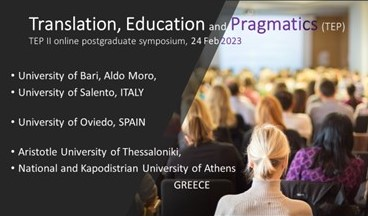Description
Story-telling perspectives in translating Aesop’s fables (Maria Kostaragkou)
Aesop fables have been multiply adapted and translated over the years to meet the needs of intended addressees. The study selects two Modern Greek (1993, 2011) and two English (1991, 2013) versions of Aesop’s fable The Woodcutter and Mercury to trace intra- and inter-cultural variation in power distance awareness and addressee age-group identity. Pragmatic analysis of the four versions suggests that the Modern Greek versions of the fable seem to be more aware of the power differentials between Mercury and the Woodcutter, whereas the ones with dialogues and images better address younger audiences and focus on the woodcutter, thus, silencing the significance of Mercury’s figure. A questionnaire addressing 15 respondents confirmed (a) power distance variation interculturally in the way the narration progresses and (b) variation in addressee age group identity. The significance of research lies in that pragmatic aspects of meaning become interculturally visible in versions of the fable and draw attention to intended discoursal patterns.

